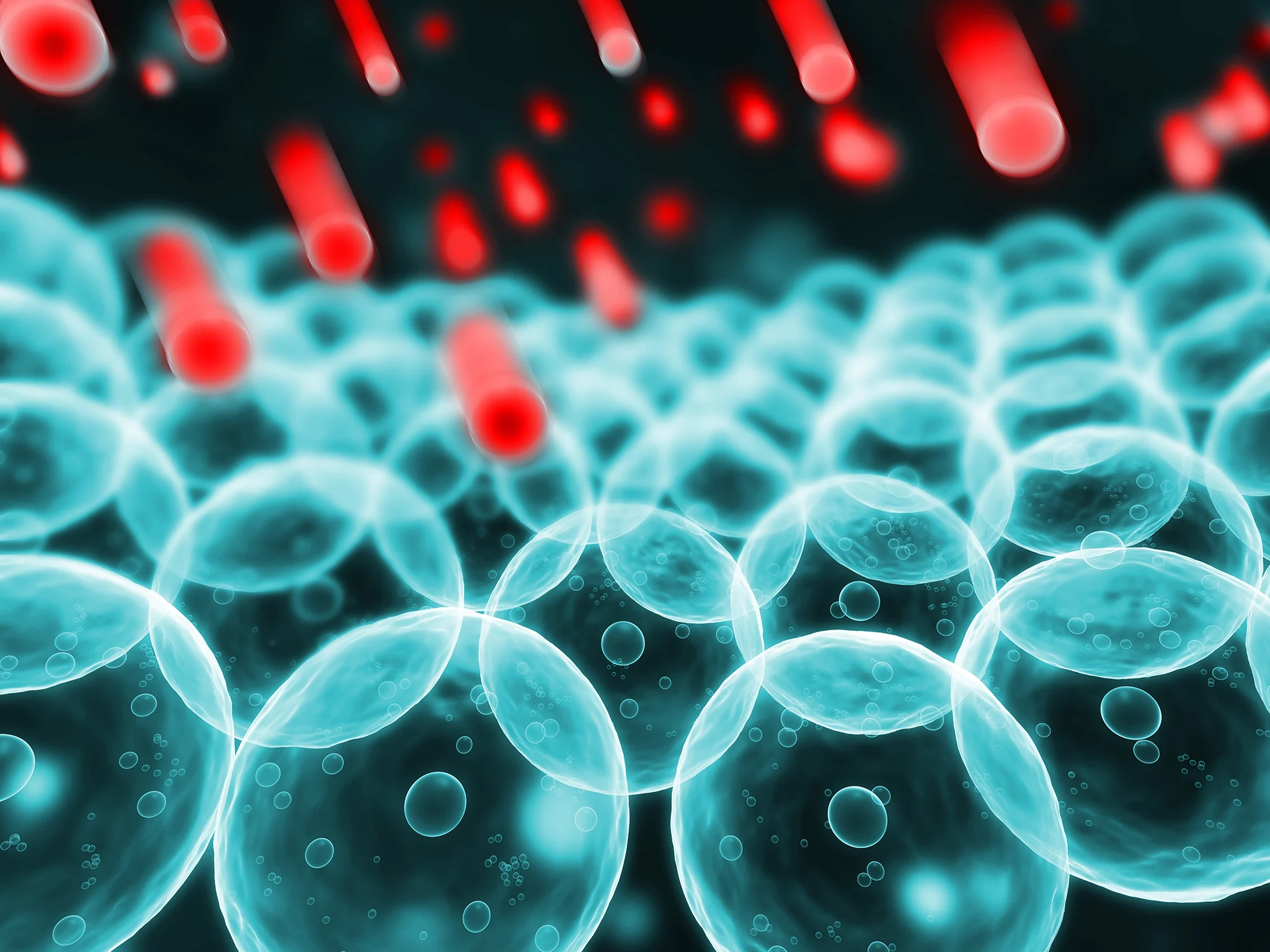When it comes to free radicals, there are three questions on everyone’s mind:
- What causes free radicals?
- How do they cause harm?
- What can I do to protect myself?
Without letting these questions persist, it might be of greater service to first explain what free radicals are.
Merriam-Webster defines “free radical” as “an especially reactive atom or group of atoms that has one or more unpaired electrons.” While this may sound complicated, the most important aspect to take away from this definition is the term, “atom.”
These unstable atoms, or bundled up atoms known as molecules, have become the center of attention for many supplements over the years. These rogue molecules accumulate in your body’s tissues and cells, causing oxidative stress. Such oxidative stress can cause damage inside your organs, skin, and joints. This is why you’ll notice supplements designed to fight back against free radicals include ingredients rich in antioxidants.
Antioxidants have shown in clinical studies to prevent the body from free radical damage. This is why the search for nontoxic sources of antioxidants has increased in recent years.
Pharmacognosy Reviews, a peer-reviewed journal in the field of Pharmacognosy (the study of how plants can be used as a source of medicinal treatments), published an in-depth piece on antioxidants titled, “Free radicals, antioxidants and functional foods: Impact on human health.” This thorough review zeroed in on the recent attention towards the field of free radical chemistry and how plants could be used as a potential tool in fighting free radical damage.
The results of the review point out the potential for free radicals to contribute to chronic health problems such as cardiovascular and inflammatory issues and give a large vote of confidence to antioxidants as a potent defense. According to the review, “antioxidants prevent free radical-induced tissue damage by preventing the formation of radicals, scavenging them, or by promoting their decomposition.”
What Causes Free Radicals?
There are multiple factors that cause free radicals to build up in your body. Among these factors are pollution, environmental toxins, physical and emotional stress, poor diet, and a lack of exercise. Put simply, these pesky radicals can be found in the food we eat, the products we use, the water we drink, and even the air we breathe.
Although that last sentence may have convinced you to never leave the house again, there are proven ways to protect yourself from free radicals — namely, antioxidants (more on this later).
How Do They Cause Harm?
Our bodies come in contact with sources of free radicals each and every day. These rogue molecules build up and cause oxidative stress to your cells and tissues. As a result, you may suffer from a loss of energy, wrinkled skin, joint and muscle discomfort, and heart health and brain function concerns.
Stanford University notes that free radicals can cause damage to key parts of your cells such as proteins, DNA, and the cell membrane. And when free radicals reach these important parts of the cells, the cell becomes compromised and loses the ability to function properly.
Prolonged exposure to things that cause free radicals could lead to the hardening of blood vessels, high blood pressure, inflammation, and anti-aging concerns, according to Healthline.
What Can I Do to Protect Myself?
Although this question may be the last on our list, it is the most important one to answer. At the end of the day, protecting yourself from potential threats to your health — including free radicals — is the top priority. With this in mind, let’s take a look at the measures you can take to limit the danger of free radicals.
As we discussed earlier, one major study confirmed the effectiveness of antioxidants when it comes to mitigating the damage caused by free radicals. As a result, efforts have been ramped up in the search for safe, nontoxic, and effective natural compounds that contain antioxidative properties.
The study went on to discuss notable alternative sources of antioxidants such as the traditional Indian diet, exotic spices, and plants. While these alternatives are considered rich sources of antioxidants, they aren’t among the most popular and easily accessible options.
Instead, your best bet is to head over to the seafood section in your local grocery store. There, you’ll find the likes of sockeye salmon, red trout, lobster, shrimp, crab, and crawfish as some of the top sources of antioxidants. With a 26-38 mg dosage of the powerful antioxidant, Astaxanthin, sockeye salmon stands above the rest of these options as the top source of seafood-based antioxidants.
Astaxanthin is the powerful carotenoid that provides the beautiful shade of pink to salmon. Dubbed the “King of Carotenoids,” Astaxanthin also provides salmon with the strength needed to swim thousands of miles upstream.
However, if you prefer something other than fish, here’s a list of other common foods that contain various forms of antioxidants, including carotenoids, polyphenols, anthocyanins, and a bunch of other hard-to-pronounce (and spell) chemical compounds that provide potent protection against free radical damage:
- Dark Chocolate
- Pecans
- Blueberries
- Strawberries
- Spinach
- Carrots
However, while each of these options is delicious, you would have to eat a lot of servings of each per day to get a significant amount of antioxidants. No exact recommendation on how “much” antioxidants one should consume each day has ever been determined or set. There is even some confusion on how to measure them. Milligrams? ORAC Value (ORAC = Oxygen Radical Absorbance Capacity). Singlet Oxygen Quenching power?
However, no matter which method is used to measure the amount of antioxidants you are getting, one thing is generally agreed upon: you should get the equivalent of 7 to 9 servings of fruit, berries, and vegetables per day (which is the primary source for antioxidants) along with Astaxanthin-rich fish a few times a week. Or, you could opt for supplements filled with antioxidants from those sources as a convenient way to make sure your cells and tissues are protected from oxidative stress caused by free radicals.
Finishing Touches on Free Radicals
The truth is there are multiple factors that cause free radicals. Unbeknownst to many, our daily routines consist of common sources of free radicals such as pollution, physical and emotional stress, environmental toxins, poor diet, and more. Your body is constantly exposed to these rogue molecules, thus making the need for protection against free radicals all the more important. By answering the three questions that concern free radicals, you’ve taken a step in the right direction for your daily health and wellness.
References
https://www.healthline.com/health/oxidative-stress#risk-factors
https://www.healthline.com/nutrition/foods-high-in-antioxidants
https://hopes.stanford.edu/about-free-radical-damage/
https://www.merriam-webster.com/dictionary/free%20radical
https://www.ncbi.nlm.nih.gov/pmc/articles/PMC3249911/
https://www.scientificamerican.com/article/what-are-orac-values/
https://www.sciencedirect.com/science/article/abs/pii/S0301462218302412









